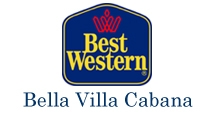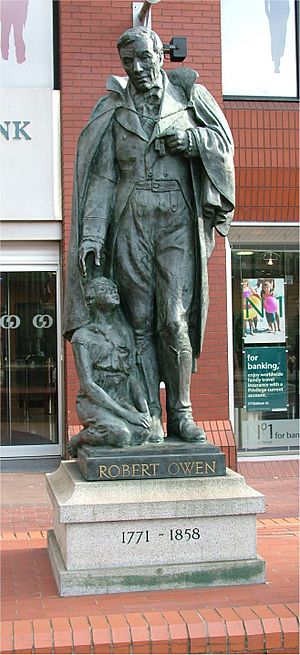Cooperative facts for kids
A cooperative (or co-op) is a special kind of business or organization. It is owned and controlled by its members, not by outside investors. This means the people who use the co-op's services or work there are usually the ones who own it.
Unlike some companies, co-ops often follow a "one member, one vote" rule. This makes sure that everyone has an equal say, no matter how much money they put in. Co-ops can be for-profit or non-profit. They are often linked to ideas about being green or helping society.
Contents
- What are the different types of cooperatives?
- Housing cooperatives: Owning your home together
- Retailers' cooperatives: Shops working together
- Utility cooperatives: Power and phone for customers
- Worker cooperatives: Employees own the business
- Consumer cooperatives: Members get benefits
- Farmers' cooperatives: Helping grow and sell food
- Hotel cooperatives: A group of hotels
- Credit unions: Cooperative banking
- How did the cooperative movement start?
- Images for kids
- See also
What are the different types of cooperatives?
There are many kinds of cooperatives, each serving different needs for its members.
Housing cooperatives: Owning your home together
A housing cooperative is a way for people to own their homes as part of a group. Residents either own shares in the co-op or have rights to live in a building that the co-op owns. This can make housing more affordable and give residents more control over their living space.
Retailers' cooperatives: Shops working together
A retailers' cooperative helps small shops work together. They can buy products in large amounts to get better prices from suppliers. They might also share marketing ideas. You often see these co-ops with local grocery stores, hardware stores, and pharmacies.
Utility cooperatives: Power and phone for customers
A utility cooperative provides services like electricity or phone lines. The customers who use these services actually own the utility company. In the United States, many of these co-ops were started to bring power and phone service to rural areas.
Worker cooperatives: Employees own the business
A worker cooperative is owned and run by its employees. The workers are the owners, so they have a direct say in how the business is managed. This means they often don't need a union because they are already in control.
The United States Federation of Worker Cooperatives helps these types of businesses across the country. There are also local groups in places like San Francisco and Boston.
Consumer cooperatives: Members get benefits
Some co-ops are owned by both employees and customers. A well-known example is REI (Recreational Equipment Incorporated). Members get discounts and can vote on important decisions for the company.
Farmers' cooperatives: Helping grow and sell food
Farmers often form cooperatives to help market their products. These co-ops can help distribute specific foods. Famous examples include:
- Sunkist Growers, Incorporated (for citrus fruit)
- Sun-Maid (for raisins)
- Ocean Spray (for cranberries and citrus)
- Land O'Lakes (for dairy and farm supplies)
Hotel cooperatives: A group of hotels
The well-known Best Western hotel chain is actually a large cooperative. It's a group of independently owned hotels that work together under one brand. They share marketing and booking systems.
Credit unions: Cooperative banking
Credit unions offer banking services in a cooperative way. They are owned by their members, who are also their customers. In North America, the first credit union was started by Alphonse Desjardins in Quebec, Canada, in 1900. He wanted to help working people with their money.
Credit unions are also common in the UK. Many started in workplaces but are now growing to serve whole communities.
How did the cooperative movement start?
The idea of cooperatives began with Robert Owen (1771-1858). He was from Wales and made a lot of money in the cotton business. Owen believed that if workers had good living conditions and education, they could improve their lives. He imagined "villages of co-operation" where people would grow their own food and make their own clothes. He tried to start these communities in Scotland and the United States, but they didn't last.
Even though Owen inspired the movement, others made his ideas more practical. One important person was Dr. William King (1786-1865). He thought co-ops should start small. He also believed that working people needed to set up co-ops themselves.
Dr. King started a monthly magazine called The Cooperator in 1828. It shared ideas about co-ops and gave practical advice on how to run a co-op shop. He suggested simple rules, like checking accounts weekly and not holding meetings in pubs.
A group of poor weavers formed the Rochdale Equitable Pioneers Society in 1843. These "Rochdale Pioneers" created a set of rules in 1844. These rules, called the Rochdale Principles, are still used by many cooperatives today.
Today, cooperatives are found all over the world. A very successful example is at Mondragón in Spain. In the United Kingdom, co-ops even formed their own political group, the Co-operative Party. This party works with the Labour Party to represent co-op members in Parliament. British co-ops still have a big role in food shops and travel in some areas.
Images for kids
-
Robert Owen (1771–1858) was a social reformer and a pioneer of the cooperative movement.
-
Co-op City in The Bronx, New York City is the largest cooperative housing development in the world.
-
The two largest supermarkets in Switzerland, Migros and Coop, are cooperatives.
-
The Co-operative Bank's head office in Manchester. The statue in front is of Robert Owen.
See also
 In Spanish: Cooperativa para niños
In Spanish: Cooperativa para niños











